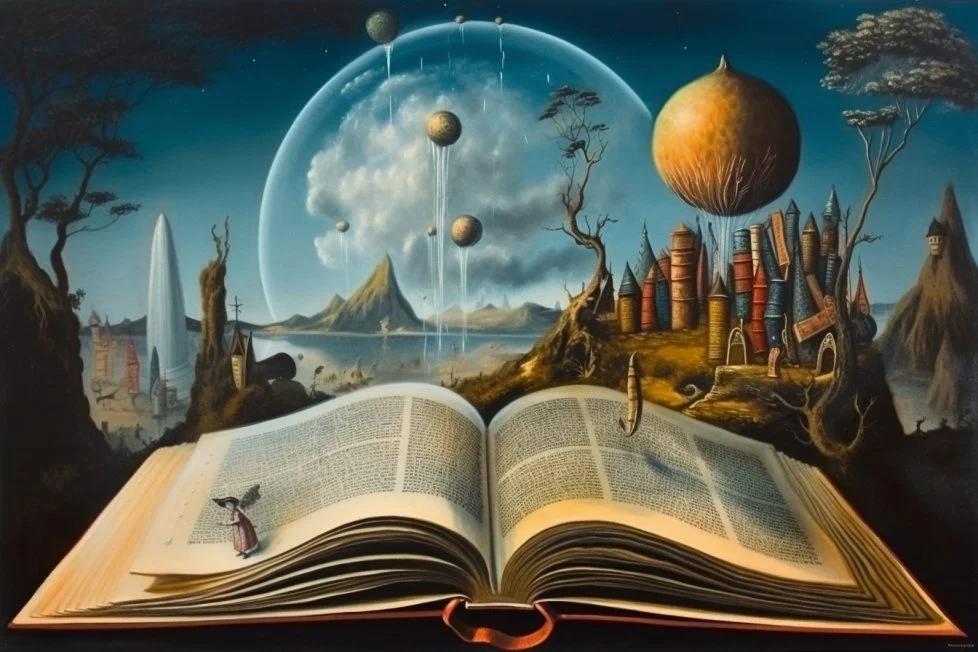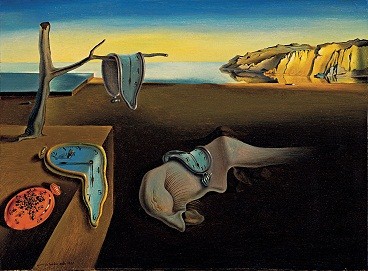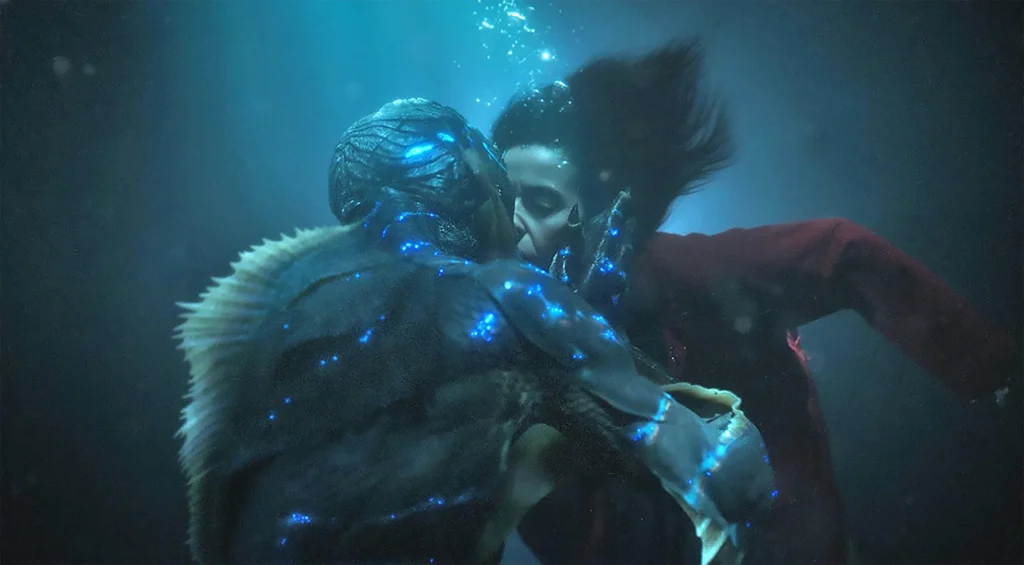Magic realism, sometimes called magical realism, is a literary and artistic genre. It blends realistic narrative with fantastical elements in a way that blurs the distinction between reality and fantasy.
It often involves the incorporation of magical or supernatural elements into an otherwise ordinary world. It seamlessly integrates the extraordinary into the everyday.

Origins
The term “magic realism” found its origins in the realm of visual arts before transitioning into the literary landscape. It was coined in 1925 by the German art critic Franz Roh.
The term initially described a painting style that emerged in the aftermath of World War I. This art form featured hyper-realistic depictions of people within the ordinary and mundane settings of the time.
Artists sought to bring a heightened sense of reality to their works by weaving fantastical elements seamlessly into everyday scenes.
Magic Realism In Visual Art
As the world grappled with the aftermath of war, artists looked for new ways to express the complexities of their new reality. Magic realism provided a lens through which to explore the fantastical and the everyday.
Some of the most famous artists of the 20th century emerged from this movement and their work has become world renowned. Some examples of magic realism in art include:
“The Persistence of Memory” (1931) by Salvador Dalí
Dalí’s iconic painting features melting clocks draped over various objects in a barren landscape. The surreal distortion of time and space creates a dreamlike atmosphere, embodying the principles of magic realism.

“The Elephants” (1948) by Salvador Dalí
Another masterpiece by Dalí, “The Elephants” portrays impossibly elongated elephants with spindly legs, floating weightlessly in an otherworldly environment. The painting invites viewers into a realm where the laws of physics bend.
“The Listening Room” (1952) by René Magritte
Magritte’s “The Listening Room” features an ordinary room with a giant apple filling the space.
Magic Realism in Literature
In the 1940s, magic realism began to move out of the confines of visual art and into literature where it found fertile ground. Magic realism allowed authors to construct fantastic worlds where magic could become a part of everyday life.
Ordinary settings, such as bustling city streets or small towns, can serve as backdrops for extraordinary events. For instance, a character might possess supernatural abilities without drawing attention.
Or, mythical creatures might inhabit the same space as humans without being seen as out of the ordinary.
Modern Examples of Magic Realism
Distinguishing magic realism from the fantasy or science fiction genres can be difficult. After all, these genres share many overlapping features.
While the fantasy and sci-fi genres have a distinct setting, magic realism is defined by its ability to seamlessly integrate the magical with the real world.
To help you get a better idea of what magical realism is here are a few modern examples:
“The Night Circus” by Erin Morgenstern (2011)
Morgenstern’s novel transports readers into the mesmerizing world of a magical competition set within a traveling circus. The fantastical elements, from illusions to mysterious performers, are seamlessly interwoven with the circus’s everyday operations.
“The Ocean at the End of the Lane” by Neil Gaiman (2013)
In this novel, a man revisits his childhood, recalling encounters with otherworldly beings and supernatural events that shape his understanding of the world.
“Life of Pi” by Yann Martel (2001)
Yann Martel’s novel employs magic realism as it recounts the extraordinary journey of Pi Patel, a shipwreck survivor adrift with a Bengal tiger. The story seamlessly integrates elements of fantasy into Pi’s struggle to stay alive.
Magic Realism in Film and Television
If the migration of magic realism from visual art to literature proved successful then its next natural progression would be into film and television. The film community eagerly embraced magic realism creating captivating tales that proved to be very lucrative at the box office.
“Big Fish” (2003)
“Big Fish” explores the complex relationship between a father and son. The film incorporates fantastical elements into the father’s life stories, blurring the lines between reality and myth.
“The Shape of Water” (2017)
“The Shape of Water” is a romantic fantasy drama that intertwines a Cold War-era setting with elements of fairy tale and magic by treating the relationship between the protagonist and a creature as a natural extension of the everyday world.

“Twin Peaks” (1990-1991, 2017)
Created by David Lynch and Mark Frost, “Twin Peaks” is a mystery drama series known for its surreal and otherworldly elements. The show combines a murder investigation with supernatural occurrences, dream sequences, and eccentric characters, creating a unique blend of mystery and magic realism.
“Good Omens” (2019)
Based on the novel by Neil Gaiman and Terry Pratchett, “Good Omens” is a miniseries that blends comedy and fantasy. The story involves an angel and a demon teaming up to prevent the apocalypse. The series combines supernatural elements with a satirical take on religious themes.
“The Umbrella Academy” (2019)
Based on the comic book series created by Gerard Way and Gabriel Bá, “The Umbrella Academy” follows a dysfunctional family of adopted superhero siblings. The series incorporates elements of time travel, alternate realities, and supernatural powers, blending fantasy with character-driven drama.
Conclusion
The enduring appeal of magic realism lies in its capacity to offer a fresh lens through which to explore the complexities of the human experience.
Whether in the form of novels that transport us to fantastical landscapes, paintings that blend the surreal with the every day, or films and television shows that suck us into visually striking worlds, magic realism captivates by enriching narratives with a touch of the mystical.
From the early works of Gabriel García Márquez, Jorge Luis Borges, and Alejo Carpentier to contemporary expressions in novels like Erin Morgenstern’s “The Night Circus” and television series like “Russian Doll,” magic realism endures as a versatile and timeless narrative style.
It has become a powerful tool for artists and storytellers to explore cultural identities, challenge traditional storytelling norms, and infuse their works with a sense of wonder.
As we witness the genre’s evolution and adaptation to modern themes and mediums, it becomes evident that the allure of magic realism lies not only in its fantastical elements but also in its ability to offer a profound and thought-provoking exploration of the extraordinary within the ordinary.
References
What is Magic Realism?
https://medium.com/my-geekin-opinion/what-is-magic-realism-be735f351e91
Magic realism
https://en.wikipedia.org/wiki/Magic_realism
MAGIC REALISM